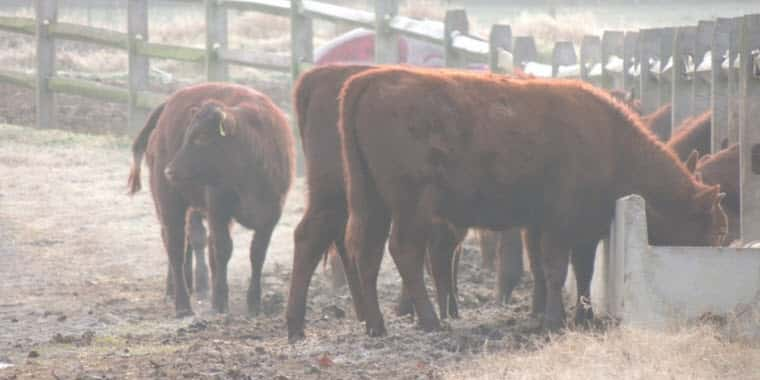By: Taylor Grussing; SDSU Extension Cow/Calf Field Specialist
Replacement heifers are traditionally kept to lead the genetic progress of the cow herd. These females, whether raised or purchased, need to have targeted development from birth to calving in order to be a productive part of the mature cow herd. Heifer development starts with proper whole-herd nutrition year-round. Yet, reviewing the basics of heifer development starting with post-weaning selection and development is a good place to start.
Selection & Target Gain
First off, selecting heifers should start with picking out females that were born early in the calving season, as the older females are more likely to reach puberty prior to the beginning of the breeding season. Additional selection criteria of structure, design and genetics can be considered also to make up the replacement pen. Once these heifers are selected, appropriate development programs need to be implemented. Developing heifers to 55 – 65% of mature weight by breeding and 85 – 90%by calving are examples of these. Look at cull cow receipts to determine mature cow weight and decide the weight you’d like developed heifers to be by breeding. Once heifers reach these targets, keeping them in an ideal body condition score (5 at breeding and 6 at calving) will promote successful reproductive performance.
As soon as heifers are selected, they need to be fed separately from other backgrounded calves, as excess energy can have negative effects on long term mammary development and calving performance. Moreover, over feeding heifers is counterproductive, as it’s hard to peel excess condition off of a heifer while keeping her growing and cycling at the same time.
So what should heifers be gaining on a daily basis? This will depend on cow size and targeted percent of mature weight by breeding season. For example, if average cow weight is 1400 lbs and 60% of mature weight by breeding is the goal, heifers need to weigh 840 lbs at breeding. Taking target weight minus current weight divided by feeding period will give you average daily gain needed to reach said target weight. Table 1 completes the example based on a June 1st breeding date.
Sioux Falls Livestock - 6/11 - 2,657 Head
| 70-79 lb Lambs | Avg: 238 | 225 - 250 |
| 80-89 lb Lambs | Avg: 237 | 225 - 245 |
| 90-99 lb Lambs | Avg: 240 | 236 - 246 |
| 100-109 lb Lambs | Avg: 231 | 222 - 238 |
| Finished Lambs | Avg: 218 | 195 - 228 |
| Cull Ewes | Utility | 55 - 70 |
98th Montana Ram/10th Montana Ewe Sales, Miles City, MT - 9/13-14 - 2,215 Head
| Overall Average Ram Price | +7% from 2022 | 1,367/Head |
| Black Face Rams | Average | 1,161/Head |
| Targhee Rams | Average | 1,587/Head |
| Rambouillet Rams | Average | 1,353/Head |
| Overall Ewes Average | Average | 313/Head |
| Ewe Lambs | Average | 210/Head |


